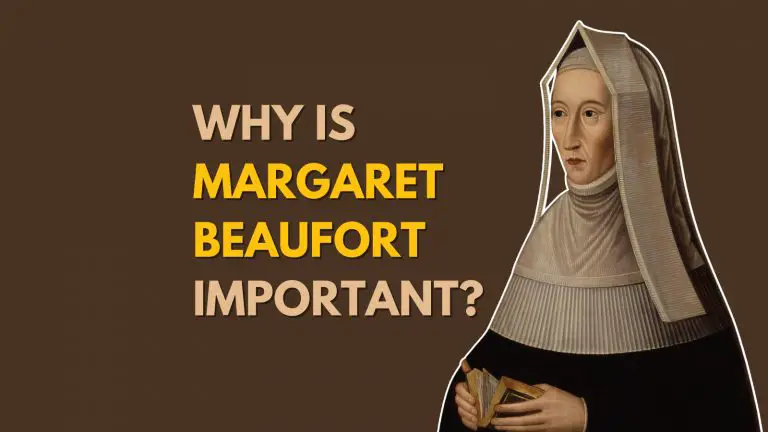11 times Henry VIII was truly tyrannical
We remember Henry VIII as the ruthless, tyrannical King that dominates English history.
He is infamous for executing two of his six wives and changing the face of England forever with the dissolution of the monasteries. He broke from Rome and made himself Supreme Head of the Church in England to secure his divorce from Catherine of Aragon. During his 36 years on the throne, it is thought that 72,000 people were executed.
Yet, it can be argued that Henry VIII was simply a king of his time. That he did what he had to in order to secure his throne and the succession. Indeed, many positive qualities could be (and have been) written about Henry.
But there was always that ruthlessness behind the handsome face and amiable smile.
This article highlights eleven times that Henry VIII was truly tyrannical.
1. The Execution of Lady Rochford
[/et_pb_text][/et_pb_column][/et_pb_row][et_pb_row _builder_version=”4.7.7″ _module_preset=”default”][et_pb_column type=”4_4″ _builder_version=”4.7.7″ _module_preset=”default”][et_pb_text _builder_version=”4.7.7″ _module_preset=”default”]Jane Rochford was the former sister-in-law of Anne Boleyn. She’d been married to Anne’s brother, George. It is believed that she was instrumental in supplying evidence against Anne and George.
She was imprisoned for her role in facilitating the affair between Catherine Howard and Thomas Culpepper.
However, when it came closer to the trial date, a problem emerged.
Since her incarceration, Jane Rochford had gone mad. There was a long-standing law in England that said the insane couldn’t be put on trial. It makes sense; a mad person has no idea what they are doing.
However, such as Henry’s wrath, and such was his desire for vengeance that he changed the law so that the insane could be executed for treason. She was condemned to death without a trial by an Act of Attainder.
She followed her mistress Catherine Howard to the block on Tower Green on 13th February 1542.
[/et_pb_text][/et_pb_column][/et_pb_row][et_pb_row _builder_version=”4.7.7″ _module_preset=”default”][et_pb_column type=”4_4″ _builder_version=”4.7.7″ _module_preset=”default”][et_pb_text _builder_version=”4.7.7″ _module_preset=”default”]2. The Torture of Anne Askew
[/et_pb_text][/et_pb_column][/et_pb_row][et_pb_row _builder_version=”4.7.7″ _module_preset=”default”][et_pb_column type=”4_4″ _builder_version=”4.7.7″ _module_preset=”default”][et_pb_image src=”http://historywithhenry.com/wp-content/uploads/2021/10/Anne_Askew_burning.gif” alt=” times Henry VIII was tyrannical” title_text=”Anne_Askew_burning” _builder_version=”4.7.7″ _module_preset=”default”][/et_pb_image][/et_pb_column][/et_pb_row][et_pb_row _builder_version=”4.7.7″ _module_preset=”default”][et_pb_column type=”4_4″ _builder_version=”4.7.7″ _module_preset=”default”][et_pb_text _builder_version=”4.7.7″ _module_preset=”default”]Henry was a complex man when it came to matters of religion. His views were constantly changing and evolving. What was heresy one week might not be the next.
There was a radical religious preacher in England called Anna Askew.
This was very strange for Tudor England. Women simply didn’t go around preaching about matters of religion. Askew held significant reformist leanings, which were very much against Henry’s thinking.
She was arrested.
The traditionalists on Henry VIII’s Council believed that she had links at court, particularly with the ladies of the current Queen, Catherine Parr. In fact, they even thought that she may have had ties to the Queen herself. They wanted to find out who she’d been talking to and who may have been sympathetic to her cause.
Henry VIII was very concerned about matters of heresy. So for the first time in history, he authorised the torture of a woman on the rack in the Tower of London. Such was the Lieutenant of the Tower, Sir Antony Knevet’s, outrage that he refused to play any part of it. Two members of the council, Thomas Wriothesley and Richard Rich, turned the wheels on the rack themselves.
Over two days, she was questioned on her contacts at court. She never gave any names.
Why do we know all of this? Anne Askew wrote about it!
She managed to smuggle a pen and paper into the Tower, and when she was left in her cell, she wrote her own account of her “examination.” She then managed to smuggle it out, and it was printed.
When they carried her out to be burnt at the stake, they had to do so in a chair. Anne Askew’s limbs had been pulled from their sockets, and she was unable to stand.
[/et_pb_text][/et_pb_column][/et_pb_row][et_pb_row _builder_version=”4.7.7″ _module_preset=”default”][et_pb_column type=”4_4″ _builder_version=”4.7.7″ _module_preset=”default”][et_pb_text _builder_version=”4.7.7″ _module_preset=”default”]3. Henry VIII’s Treatment of Catherine of Aragon
[/et_pb_text][/et_pb_column][/et_pb_row][et_pb_row _builder_version=”4.7.7″ _module_preset=”default”][et_pb_column type=”4_4″ _builder_version=”4.7.7″ _module_preset=”default”][et_pb_text _builder_version=”4.7.7″ _module_preset=”default”]Henry was married to Catherine of Aragon for over 20 years. But in the final years, he wanted her gone.
He wanted a divorce so he could marry Anne Boleyn. Henry hoped that Anne could finally provide him with the heir that Catherine had failed to do.
Henry went to the extreme measure of breaking from the Church of Rome so that a divorce could finally be granted.
He banished Catherine to Kimbolton Castle. It wasn’t in the greatest condition.
Because she refused to acknowledge the divorce and still referred to herself as the Queen of England, Henry ensured that her conditions were harsh. He sacked most of her servants, and he refused to allow her to communicate with their daughter, The Lady Mary.
Catherine took to living in just a single room because of the costs and the dilapidated condition of the building.
Catherine knew she was dying and wrote Henry one final letter. Henry refused to read it when it was delivered.
When news came that Catherine of Aragon had finally died. He and Anne Boleyn dressed up in yellow to celebrate.
[/et_pb_text][/et_pb_column][/et_pb_row][et_pb_row _builder_version=”4.7.7″ _module_preset=”default”][et_pb_column type=”4_4″ _builder_version=”4.7.7″ _module_preset=”default”][et_pb_text _builder_version=”4.7.7″ _module_preset=”default”]4. Henry VIII’s Treatment of his daughter, Mary
[/et_pb_text][/et_pb_column][/et_pb_row][et_pb_row _builder_version=”4.7.7″ _module_preset=”default”][et_pb_column type=”4_4″ _builder_version=”4.7.7″ _module_preset=”default”][et_pb_image src=”http://historywithhenry.com/wp-content/uploads/2021/10/Anthonis_Mor_001.jpg” alt=” times Henry VIII was tyrannical” title_text=”Anthonis_Mor_001″ _builder_version=”4.7.7″ _module_preset=”default” hover_enabled=”0″ align=”center” sticky_enabled=”0″ width=”53%”][/et_pb_image][/et_pb_column][/et_pb_row][et_pb_row _builder_version=”4.7.7″ _module_preset=”default”][et_pb_column type=”4_4″ _builder_version=”4.7.7″ _module_preset=”default”][et_pb_text _builder_version=”4.7.7″ _module_preset=”default”]Like everyone in the senior position in the country, Lady Mary was required to sign an oath that acknowledged that Henry’s marriage to her mother, Catherine of Aragon, wasn’t legal and should never have stood.
Effectively, this made Lady Mary illegitimate.
Mary refused to accept this. Neither did she accept that her title of Princess should be removed from her or that Anne Boleyn was the Queen of England.
So Henry VIII refused to communicate with his daughter for three years. It was the falling out to end all fallings out.
She was even sent to act as a servant to the new “Princess,” Henry and Anne’s daughter, Elizabeth.
During this time, Henry VIII’s second wife, Anne Boleyn, even encouraged Henry to put Mary on trial and send her to the block. This, at least, he did resist.
After Anne’s death, there was a reconciliation between father and daughter, thanks to Jane Seymour. Eventually, Mary accepted her father’s demands, and she was finally allowed back to court.
[/et_pb_text][/et_pb_column][/et_pb_row][et_pb_row _builder_version=”4.7.7″ _module_preset=”default”][et_pb_column type=”4_4″ _builder_version=”4.7.7″ _module_preset=”default”][et_pb_text _builder_version=”4.7.7″ _module_preset=”default”]5. The execution of Francis Dereham
[/et_pb_text][/et_pb_column][/et_pb_row][et_pb_row _builder_version=”4.7.7″ _module_preset=”default”][et_pb_column type=”4_4″ _builder_version=”4.7.7″ _module_preset=”default”][et_pb_text _builder_version=”4.7.7″ _module_preset=”default”]After Catherine Howard’s affair with Thomas Culpepper was exposed, further investigations were undertaken into the Queen’s background. Her previous relationship with her secretary, Francis Dereham, was discovered.
Henry didn’t like that the Queen had been “spoilt” prior to her even meeting him. In fact, he resented this more than the affair with Culpepper.
Henry VIII changed the law that made it illegal for anyone to have sexual knowledge of the Queen of England before the King. Any Queen of England had to disclose her sexual history to the King within twenty days of marriage.
Dereham was subjected to the full horrors of a traitor’s death of being hanged, drawn, and quartered. Whereas Thomas Culpepper, who was executed simultaneously, had his sentence commuted to a mere beheading.
[/et_pb_text][et_pb_video src=”https://www.youtube.com/watch?v=JXRiKWg34Ss” _builder_version=”4.7.7″ _module_preset=”default” hover_enabled=”0″ sticky_enabled=”0″][/et_pb_video][/et_pb_column][/et_pb_row][et_pb_row _builder_version=”4.7.7″ _module_preset=”default”][et_pb_column type=”4_4″ _builder_version=”4.7.7″ _module_preset=”default”][et_pb_text _builder_version=”4.7.7″ _module_preset=”default”]6. The Non-Arrest of Catherine Parr
[/et_pb_text][/et_pb_column][/et_pb_row][et_pb_row _builder_version=”4.7.7″ _module_preset=”default”][et_pb_column type=”4_4″ _builder_version=”4.7.7″ _module_preset=”default”][et_pb_text _builder_version=”4.7.7″ _module_preset=”default”]In the final years of Henry VIII’s reign, he used to play off the two warring factions on the council; the traditionalists and the religious reformers.
Caught in the middle was his final wife, Catherine Parr. She was very much a religious reformer, and the traditionalists on the council, such as Bishop Stephen Gardiner, wanted to see the back of her.
Unfortunately, Catherine made a fatal error.
One evening, while sitting with the King and some of his gentlemen, she ended up pushing him too far and questioned him on matters of religion. Henry berated her. He wasn’t being educated on religion by a woman.
This was the traditionalist faction’s chance.
Henry drew up a warrant for Catherine Parr’s arrest.
The traditionalists on the council believe they had won. However, somewhat mysteriously, the warrant was lost. It ended up being picked up and taken to Catherine by a loyal servant. After reading it, she collapsed in floods of tears, wailing inconsolably.
Henry was forced to come from his apartments to come and see her. At that point, she apologised most profusely for ever offending him on matters of religion. She stated that she was only doing it to distract him from the pain in his leg and that she might benefit from the wealth of his knowledge and intelligence. This was the sort of flattery that Henry liked. He said if that was the case, then they would be perfect friends again.
However, the next day the Lord Chancellor of England, Thomas Wriotheseley, appeared with a band of soldiers. He was coming to arrest Catherine Parr. However, the King who was with the Queen at the time stood up from his seat and shouted at his Lord Chancellor loudly, calling him a knave and dismissing him.
It seems an extraordinary state of affairs.
It appears that Henry drew up the arrest warrant for the express purpose of losing it, and it ending up in Catherine Parr’s hands. It was as though he wanted to frighten her and bring her into line. He then accepted her apology, knowing that she wasn’t likely to offend him on matters of religion again. But then he “forgot” to tell his leading counsellors that the arrest warrant had been withdrawn. Wriotheseley duly appeared to arrest the Queen. This scared Catherine Parr further (just to remind her about her apology) and humiliated the chancellor himself.
It is an obvious example of how Henry used to like to play games and frighten people. Like many tyrants, he did it very successfully.
[/et_pb_text][/et_pb_column][/et_pb_row][et_pb_row _builder_version=”4.7.7″ _module_preset=”default”][et_pb_column type=”4_4″ _builder_version=”4.7.7″ _module_preset=”default”][et_pb_text _builder_version=”4.7.7″ _module_preset=”default”]7. Henry VIII’s paranoia about Henry Howard
[/et_pb_text][/et_pb_column][/et_pb_row][et_pb_row column_structure=”1_5,3_5,1_5″ _builder_version=”4.7.7″ _module_preset=”default”][et_pb_column type=”1_5″ _builder_version=”4.7.7″ _module_preset=”default”][/et_pb_column][et_pb_column type=”3_5″ _builder_version=”4.7.7″ _module_preset=”default”][et_pb_image src=”http://historywithhenry.com/wp-content/uploads/2021/10/Henry-Howard.jpg” alt=” times Henry VIII was tyrannical” title_text=”Henry-Howard” _builder_version=”4.7.7″ _module_preset=”default”][/et_pb_image][/et_pb_column][et_pb_column type=”1_5″ _builder_version=”4.7.7″ _module_preset=”default”][/et_pb_column][/et_pb_row][et_pb_row _builder_version=”4.7.7″ _module_preset=”default”][et_pb_column type=”4_4″ _builder_version=”4.7.7″ _module_preset=”default”][et_pb_text _builder_version=”4.7.7″ _module_preset=”default”]Henry Howard, Earl of Surrey, was Henry VIII’s final victim. He was beheaded just two weeks before the King himself died.
Henry Howard was the son of the Duke of Norfolk and very outspoken. He detested what he called the “new men” about the King. Those from the lower class, like Cromwell or from less important families like the Seymours. He believed that the Howards, as the premier family in the country, should be the chief advisors to the King.
Howard was only too aware of his status and was what we might term a snob about it. He wasn’t the most level-headed of people; he would get drunk and brawl regularly. Howard even got himself imprisoned at one point for throwing stones through windows in London.
Henry VIII became convinced that Henry Howard had a plan to usurp the throne after his death.
When Howard quartered his coat of arms with those of Edward the Confessor, Henry VIII had means to strike. The King insisted that it was a sign that Henry Howard was illustrating his own royal descent. It was confirmation of his concerns that he was planning on stealing the throne from his young son.
Henry Howard was beheaded on Tower Hill on the 19th of January 1547, aged just 30.
There was nothing to suggest that he was attempting to seize the throne. It was simply Henry VIII’s paranoia at work.
[/et_pb_text][/et_pb_column][/et_pb_row][et_pb_row _builder_version=”4.7.7″ _module_preset=”default”][et_pb_column type=”4_4″ _builder_version=”4.7.7″ _module_preset=”default”][et_pb_text _builder_version=”4.7.7″ _module_preset=”default”]8. The Execution of Margaret Pole, Countess of Salisbury
[/et_pb_text][/et_pb_column][/et_pb_row][et_pb_row _builder_version=”4.7.7″ _module_preset=”default”][et_pb_column type=”4_4″ _builder_version=”4.7.7″ _module_preset=”default”][et_pb_image src=”http://historywithhenry.com/wp-content/uploads/2021/10/Unknown_woman_formerly_known_as_Margaret_Pole_Countess_of_Salisbury_from_NPG_retouched-scaled.jpg” alt=” times Henry VIII was tyrannical” title_text=”Unknown_woman,_formerly_known_as_Margaret_Pole,_Countess_of_Salisbury_from_NPG_retouched” _builder_version=”4.7.7″ _module_preset=”default” hover_enabled=”0″ sticky_enabled=”0″ align=”center” width=”62%”][/et_pb_image][/et_pb_column][/et_pb_row][et_pb_row _builder_version=”4.7.7″ _module_preset=”default”][et_pb_column type=”4_4″ _builder_version=”4.7.7″ _module_preset=”default”][et_pb_text _builder_version=”4.7.7″ _module_preset=”default”]Margaret Pole was the daughter of George Duke of Clarence, the brother of King Edward IV and King Richard III.
She had a claim on the throne of England. She was a Catholic and deeply sympathised with her long-time friend, Catherine of Aragon, over Henry’s attempts to divorce her.
When Henry made himself Supreme Head of the Church of England, her son Reginald Pole fled abroad, refusing to take the oath. Margaret did so, but we can only imagine her thoughts when she did so.
Reginald Pole presented Henry with a problem. As a son of Margaret, he had a claim on the throne himself. He ended up in Rome and now had the backing of the Catholic Church and the power of the Pope. Henry saw this as an act of pure treason.
But Henry couldn’t reach Reginald over in Italy, so he exacted his vengeance on the Pole family. Reginald’s brother Baron Montagu was executed for treason, his younger brother Geoffrey was also arrested but later released.
In May 1539, Margaret Pole was arrested and attained for treason. Evidence was produced that showed Margaret Pole’s support for the Pilgrimage of Grace. This great rebellion arose in the north a few years earlier. She was stripped of her lands and titles and was imprisoned in the Tower. She was 65 years of age.
She was sentenced to death. However, she was left in the Tower for almost two and a half years.
Then on the morning of the 27th of May 1541, Margaret was informed that she would die within the hour.
There are numerous legends regarding Margaret Pole that exist; one that she had carved this poem on her cell wall.
‘For traitors on the block should die;
I am no traitor, no, not I!
My faithfulness stands fast and so,
towards the block I shall not go!
Nor make one step, as you shall see;
Christ in Thy Mercy, save Thou me!’
The second, she refused to go to the scaffold willingly, and the executioner was forced to chase her around Tower Green.
She died purely because of her proximity to the throne and that Henry believed that Reginald was a direct threat to him.
[/et_pb_text][/et_pb_column][/et_pb_row][et_pb_row _builder_version=”4.7.7″ _module_preset=”default”][et_pb_column type=”4_4″ _builder_version=”4.7.7″ _module_preset=”default”][et_pb_text _builder_version=”4.7.7″ _module_preset=”default”]9. The ruthless revenge on the Abbot of Glastonbury
[/et_pb_text][/et_pb_column][/et_pb_row][et_pb_row column_structure=”1_5,3_5,1_5″ _builder_version=”4.7.7″ _module_preset=”default”][et_pb_column type=”1_5″ _builder_version=”4.7.7″ _module_preset=”default”][/et_pb_column][et_pb_column type=”3_5″ _builder_version=”4.7.7″ _module_preset=”default”][et_pb_image src=”http://historywithhenry.com/wp-content/uploads/2021/10/Glastonburyabbey.jpg” alt=” times Henry VIII was tyrannical” title_text=”Glastonburyabbey” _builder_version=”4.7.7″ _module_preset=”default”][/et_pb_image][/et_pb_column][et_pb_column type=”1_5″ _builder_version=”4.7.7″ _module_preset=”default”][/et_pb_column][/et_pb_row][et_pb_row _builder_version=”4.7.7″ _module_preset=”default”][et_pb_column type=”4_4″ _builder_version=”4.7.7″ _module_preset=”default”][et_pb_text _builder_version=”4.7.7″ _module_preset=”default”]The dissolution of the monasteries was nearing its end.
Glastonbury Abbey had held out for years, and it became one of the final monasteries to finally surrender in 1539. It was valued in Cromwell’s books as the second wealthiest Abbey in England. So Henry VIII was rather annoyed it had taken so long to get his hands on it.
Now that he had, he was going to get his revenge.
He would do it in a way to make sure that those final few remaining Abbeys surrendered as soon as possible.
The 80-year-old Abbot, Richard Whiting, went on trial for robbery and other crimes. It was a false accusation, and the result was a foregone conclusion.
Guilty.
He was dragged up on Glastonbury Tor with two of his brethren, and he was hanged, drawn, and quartered.
His head was removed and placed over the gate of the Abbey as a warning not to defy the King.
[/et_pb_text][/et_pb_column][/et_pb_row][et_pb_row _builder_version=”4.7.7″ _module_preset=”default”][et_pb_column type=”4_4″ _builder_version=”4.7.7″ _module_preset=”default”][et_pb_text _builder_version=”4.7.7″ _module_preset=”default”]10. “Put Edinburgh to fire and sword”
[/et_pb_text][/et_pb_column][/et_pb_row][et_pb_row _builder_version=”4.7.7″ _module_preset=”default”][et_pb_column type=”4_4″ _builder_version=”4.7.7″ _module_preset=”default”][et_pb_text _builder_version=”4.7.7″ _module_preset=”default”]Henry VIII thought that an arrangement to marry his son, the future Edward VI and Mary, Queen of Scots, would be a great idea.
It would unify the crowns of England and Scotland.
The Scots thought it would be a good idea as well. A treaty was signed, and everyone was thrilled.
Then the Scots decided it wasn’t such a good idea after all. Henry VIII got pretty annoyed about it.
And so started a war between England and Scotland known as the “rough wooing.”
Henry sent an army to Scotland with the instruction, “Put all to fire and sword, burn Edinburgh, so razed and defaced when you have sacked and gotten what ye can of it, as there may remain forever a perpetual memory of the vengeance of God lightened upon (them) for their falsehood and disloyalty.”
The attack began on the 3rd of May 1544. The castle was defended by cannon firing along the Royal Mile. Still, much of the city was indeed destroyed by fire.
Mary, Queen of Scots, married three times but never to Prince Edward.
[/et_pb_text][/et_pb_column][/et_pb_row][et_pb_row _builder_version=”4.7.7″ _module_preset=”default”][et_pb_column type=”4_4″ _builder_version=”4.7.7″ _module_preset=”default”][et_pb_text _builder_version=”4.7.7″ _module_preset=”default”]11. The Disappearance of Henry Pole The Younger
[/et_pb_text][/et_pb_column][/et_pb_row][et_pb_row _builder_version=”4.7.7″ _module_preset=”default”][et_pb_column type=”4_4″ _builder_version=”4.7.7″ _module_preset=”default”][et_pb_text _builder_version=”4.7.7″ _module_preset=”default”]This final example of Henry VIII’s tyranny is the most disturbing of all.
We already know about Henry’s “problem” with the Pole family. You will recall that before Margret Pole got chased around Tower Green, her son, Lord Montagu, was executed.
Also taken into the Tower of London at the same time was Montagu’s young son, Henry Pole the Younger.
Montagu was Margret Pole’s eldest child, and so had the closest claim to the throne. When he was executed, that claim passed to Henry Pole the Younger.
However, Henry Pole the Younger was never executed. He was never even put on trial. The boy went into the Tower of London and was never heard of again.
You could argue that possibly he was released to live out his life in peace somewhere, or maybe he died of natural causes.
But considering all you have read about Henry VIII in this article, do you really think that would have been the case?
[/et_pb_text][/et_pb_column][/et_pb_row][/et_pb_section]





